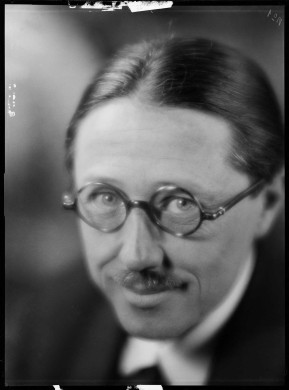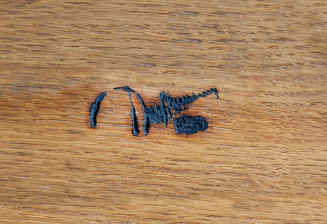Jacques-Émile Ruhlmann
A key figure in Art Deco aesthetics, Jacques-Émile Ruhlmann, one of the most famous decorators of the 1930s, designed all the furniture in the Africa Salon at the Palais de la Porte Dorée, the state room which, during the 1931 Colonial Exposition, served as the reception office of the Minister of the Colonies, Paul Reynaud.

Legende
Jacques-Émile Ruhlmann
Credit
© Roger Viollet
Born on August 26th 1879, died on November 15th 1933 in Paris, Jacques-Émile Ruhlmann was self-taught and worked from a very young age for his family’s decoration business, the Ruhlmann company, specialised in painting, wallpaper and mirrors, located at the Marché-Saint-Honoré in Paris. In 1907, on the death of his father, he took over management and was subsequently able to finance his artistic projects. He trained himself in the techniques of interior architecture and decoration, and started to design his own furniture for himself and close friends. With no training in cabinetmaking, he imagined each of his furniture pieces, drew them in his sketchbooks (some of which would even be published), and supervised the plan for their execution and manufacture entrusted to his employees.
Creator of luxury furniture
In 1910, Ruhlmann took part in the Salon d’automne and began to make a name for himself, synonymous with elegance and refinement, on the Paris market. Orders were flooding in and he became a recognised creator of luxury furniture. He developed the company and, in 1912, moved it to a building with a double facade on the Rue Maleville, where he continued the painting, wallpaper and mirror businesses, and created an agency specialised in decoration on the Rue de Lisbonne.
From 1913 to 1923, he called on artisans in the Faubourg Saint-Antoine to produce the furniture he designed; the Haentges Frères and Fenot companies were his main suppliers. In 1919, he partnered with Pierre Laurent and founded the Établissements Ruhlmann et Laurent, then bought an industrial building on the Rue d'Ouessant, near the Champ-de-Mars, to set up his decoration workshops (painting, tapestry, wallpaper and mirrors). In 1923, to meet the demands of increased business, he opened a cabinetmaking workshop there, while the creation workshop remained in the Rue de Lisbonne.

Moulage signature dos vitrine
© Palais de la Porte Dorée, 2021
The creation of furniture designed by Ruhlmann and stamped with his logo was always entrusted to talented cabinetmakers, most of them trained at the École Boulle. He also worked with other artisans, especially for bronzes or lacquer panels, used to decorate certain pieces of furniture, made by Jean Dunand.
The Exhibition of Decorative Arts
In 1925, at the Exhibition of Decorative Arts (which gave its name to Art Deco style), Ruhlmann became the artistic director of the Hôtel du Collectionneur, a veritable manifesto to Art Deco architecture. For this temple of luxury, which depicts the ideal interior for a wealthy connoisseur in the 1920s, Ruhlmann called on forty or so artists and artisans, who would become great names in Art Deco: architect Pierre Patout, sculptors Alfred Janniot (creator of the sculptural group Hommage à Jean Goujon), Charles Hairon, Antoine Bourdelle, François Pompon and Joseph Bernard (who sculpted the Frise de la danse that sits atop the pavilion), ironworker Edgar Brandt, fine cabinetmaker Eugénie O'Kin, painters Jean Dupas and Henri Marret (creator of the frescoes that decorate the peristyle of the pavilion), along with the upholsterers and illustrators Roger Reboussin and Émile Gaudissard. In the large oval salon, Antoine Bourdelle’s Héraklès is placed on one of Ruhlmann’s furniture pieces lacquered by Jean Dunand. Certain elements of the mansion’s decoration would be purchased by the Metropolitan Museum of Art of New York the following year.
In 1927, Ruhlmann designed the decor and furniture for the first-class tea salon on the Île-de-France ocean liner.
The Ruhlmann style, with its sleek, minimalist lines, was not confined to the creation of furniture. A true “interior-designer-decorator”, he designed all the decoration, true to the total work of art notion, integrating all the decorative arts (cabinetmaking, marquetry, ceramics, ironwork, lighting, carpets and textiles…), and using refined materials, borrowing from the luxury domain, the real signature of Art Deco aesthetics. The furniture is always decorated with sumptuous veneers, made from rare exotic essences such as rosewood from the Indies and Brazil, ebony from Macassar (Indonesia), amaranth from Guyana or mahogany from Cuba, often inlaid with ivory, horn or tortoiseshell.
Decoration and furniture in the Africa Salon
In 1931, Albert Laprade, architect of the Palais de la Porte Dorée, submitted an order with Ruhlmann for the decoration and furnishing of the reception office of Minister of the Colonies, Paul Reynaud, known as the Africa Salon.
For this reception room, Ruhlmann created an exceptional set of furniture made from Macassar ebony, classified as historic monuments, including a desk topped with shagreen (shark-ray skin transformed into leather), inlaid with diagonal ivory lines, and four “Elephant” chairs, club armchairs embellished with brown Moroccan leather featuring white piping.
He also designed the two double-panelled monumental doors (with handles made from warthog-tusk ivory) and marquetry parquet, also Macassar ebony, with lines of lemon wood, a light wood that contrasts with the dark colour of the ebony.
Jacques-Émile Ruhlmann died at the age of 54 on November 15th 1933 in Paris. He had designed his own funerary monument for the Passy cemetery, and had entrusted its execution to Pierre Patout and Alfred Janniot who made a black marble sculpture, La flamme du Souvenir. In compliance with his will, his firm closed after his death.







